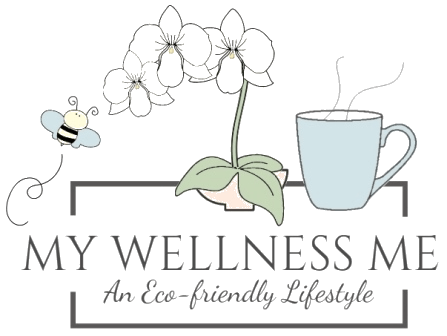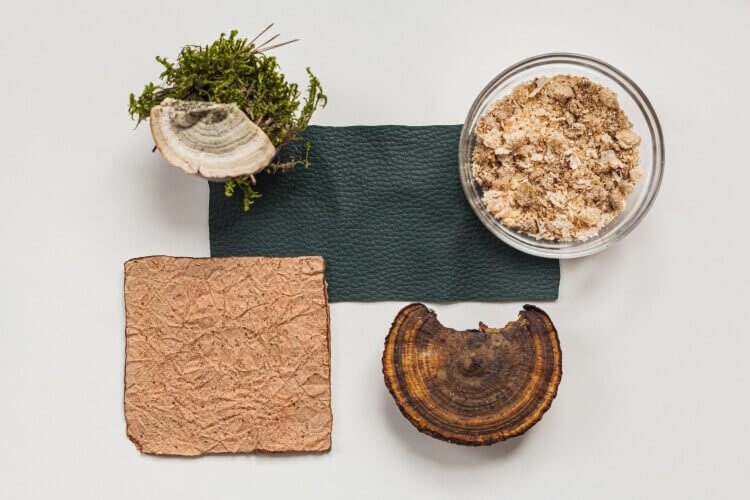Vegan leather is a thing.
Have we created non-meat leather we can consume? Thankfully, the limitless human mind has not thought of such a useless invention, not yet.
Vegan leather in the present-day context is different.
The simplest definition is that it is an alternative for leather that comes from animals.
That’s a great thing, is it not? Consider the terrible conditions where many of these animals bred for the purpose live out their lives.
What of its footprint, then – plastic or otherwise? How sustainable is vegan leather?
Unfortunately, there is no perfect green product, and vegan leather, too, has its pros and cons.
Is it better than animal leather, though?
We’ll discuss that later in the post but first, let’s look at why it may be better than animal leather.
Why vegan leather is better than animal leather
The answer to this seems obvious.
Unlike with leather as we know it, there’s no cruelty to animals during the making of the product.
Some of these animals that cater to the meat and leather industry live out their entire lives under appalling conditions, packed in cages, with little room to maneuver. Once you see this, it hits you hard, whether you are a vegetarian or a meat-eater.
The industry knows this, but it’s such a monolith today that they don’t seem to be bothered.
That’s the moral dilemma. Environmentally too, animal leather does great harm to the planet.
The environmental impact of animal leather
The problems begin after the animal is put down. The skin, which will eventually turn into leather, goes through a hazardous production process.
Turning animal skin into leather demands a process that debilitates the planet.
Tanning leather requires salt, sludge, acids, sulfides, and other chemicals, which make their way into the environment, especially waterways, resulting in horrible consequences.
Can’t we stop the tanning process, then?
Yes, but that would mean the leather belt, without chemical treatment, will rot in the wardrobe, and no one wants that.
There are also dangers for people who work in these factories. Toxic chemicals like arsenic may result in leukemia and lung cancer.
Then there’s the small matter of the thousands of acres of forests cut down to raise livestock.
So, imagine a world without the meat and leather industry.
There are close to 1.5 billion cattle in the world right now. And every time a cow belches or passes gas, it releases methane.
Why is that harmful? It’s just the little matter of methane being 28 times more dangerous than CO2.
When you consider all this, the case for using vegan leather becomes formidable.
But vegan leather is not blameless when it comes to our carbon footprint.
Vegan leather is better but…
There is no doubt that a vegan diet benefits the environment.
However, it’s not that clear-cut with vegan accessories.
How do you make vegan leather?
You may find one or both polymers, polyurethane or polyvinyl chloride (PVC), in vegan leather products.
Nowadays, polyurethane is preferred as it tends to give the product a softer and more leathery look. Also, it is less harmful to the environment of the two.
Anyhow, the very mention of these two polymers sends a shiver down our collective sustainable spine.
If you draw up a list of environment-harming substances, polyurethane and PVC will be there near the very top.
However, they are necessary for that wrinkled look you get with leather. Or you will end up with products like a pure vegan belt or vegan purse – which doesn’t have the same ring to them, do they?
So, predictably manufacturers use them to get that “leather” look.
That leads us to the next question – can vegan leather be made without any harmful substances involved?
The short answer is yes; if some of the claims are true.
Cacti, pineapple leaves, and cork, among other biodegradable substances, are all used to make vegan leather.
Natural substances used to make vegan leather
Are these environment-friendly vegan leather products mixed with polymers, or are they green in the true sense of the word?
Here is a list of biodegradable alternatives and a few companies that are producing them.
- Apple peels: Veerah, a vegan shoe company, makes shoes from dried and ground apple peels that turn leather-like once combined with pigment and (alas) polyurethane.
- Cactus leaves: Desserto makes soft and durable leather from nopal cactus leaves. The one catch is that the vegan leather is “partially biodegradable.”
- Cereal crops: Will’s Vegan Store makes luxury vegan leather shoes using bio-oils from organically grown cereal crops. How cool does that sound? The only downside is that there is a small amount of polyurethane used.
- Pineapple leaves: Pineapple leaves, otherwise useless after a harvest, are processed to make vegan leather called Pinatex. The one drawback with this otherwise good product is the coat of a petroleum-based resin over the leather, which means it is not completely biodegradable.
- Coconut water: Malai, an India-based company, has found a way to use leftover coconut water and turn it into durable and compostable vegan leather. Unlike others on the list, this one comes close to a truly green product.
- Cork: Natural Fiber Welding has a product called Mirum that combines waste vegetable and coconut oils and waste cork for a leather-like substance. It uses zero percent plastic – another one on the list that scores high on sustainability.
Some companies, like the ones mentioned, are transparent about the products they make. Some lack, ahem, a little morality and indulge in wordplay and emotional messages to attract customers.
Beware the greenwashers
Some manufacturers will argue that leather is a byproduct of the meat industry. In simple terms, once the meat is separated for consumption, the skin is just lying there, so why not make the best use of it?
That’s a debate for another day. But for eco-friendly enthusiasts, the production process with its chemicals is still a big red flag.
Others will bring out a giant brush and a bucket of green paint and get down to changing our minds.
They’ll probably lead with the “no animal cruelty” card and tell us that polymers were barely used.
Unfortunately, “barely” is not enough.
There’s already a copious amount of microplastics endangering the planet, and adding to the numbers is not sustainable.
So, which should you choose – animal leather or vegan leather?
The choice is not easy
It’s like picking between a furnace and hellfire.
Maybe the animal cruelty bit tilts the scale in favor of vegan leather.
On the flip side, animal leather is more likely to biodegrade. Polymers, especially PVC, do not. PVC can take half a millennium to biodegrade; even then, the chances are high that it breaks down into microplastics, and that does the marine animals no good.
How about using other safer more biodegradable alternatives, such as bamboo and jute?
What is your opinion on vegan leather? Have you used it? Let us know in the comments.


6 comments
This is certainly a very informative post! I have both vegan and animal leather products but I had no idea on the chemicals used to process each of these. In a world where everything seems to be disposed of, my goal is to keep these products and not buy others as long as I possibly can. Thanks for posting!
You’re welcome Jodie and I am happy you found the post useful. And you are spot on – exploit every ounce of usefulness from products you already have. 🙂
I am fascinated to be reading this right now, as I was just chatting with my brother and dad yesterday, jokingly, about ‘not a leather belt’! Another thing this brings to mind is how I had my eyes opened by the modern process of tanning leather; in a search for how to tan a deer hide off the deer my brother brought home during the fall, it was nearly impossible to find anything on the traditional method of salt and animal brain! I found way too many methods involving a bucket of chemical substance I would want to even look at, much less smell.
While I have never used vegan leather, I have heard of it. As with most alternative solutions, it is tough to find a substitute that is more biodegradable and eco-friendly than the thing we are trying to avoid. I am intrigued by the coconut water and cork leather; is is possible to make something close to the real thing through creative and natural means and I love that there are people coming up with innovative ways to offer sustainable substitutes.
Thanks so much for sharing your thoughts and some of the facts behind both the leather and vegan leather processes!
Hahaha… there’s some telepathy going on here. And you’re welcome xx
I like your point about there not being proper alternatives. It is one thing trying to avoid a product; totally another finding a replacement that matches up quality-wise and has a significantly lesser footprint.
Personally, I have found hope in companies, especially some below-the-radar startups that are run by good people with their green hearts in the right place. I try in my own little way to bring them to people’s notice.
Excellent post and not something I knew anything about previously. I feel well informed having read it! Thanks for sharing!
Thanks and you’re welcome. Glad you found the post useful.
Comments are closed.